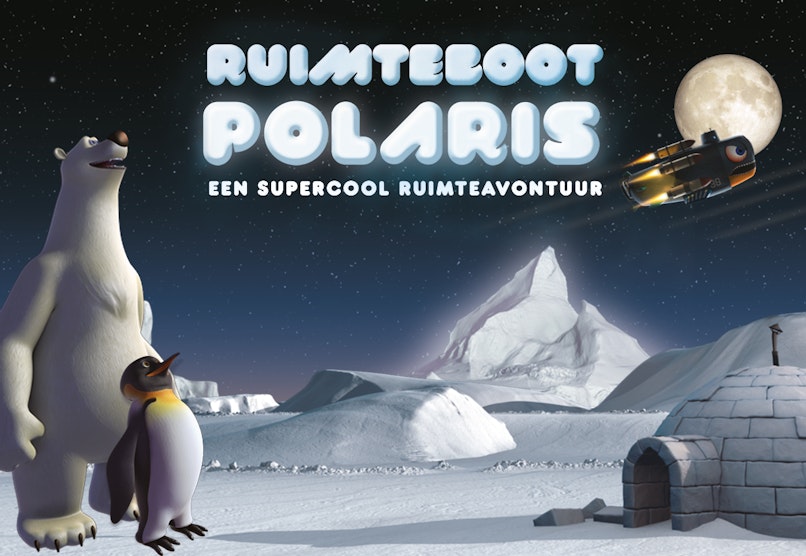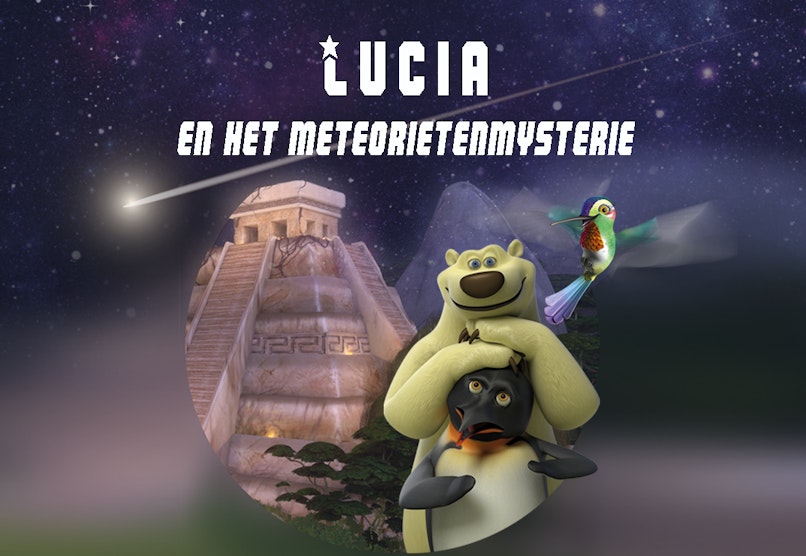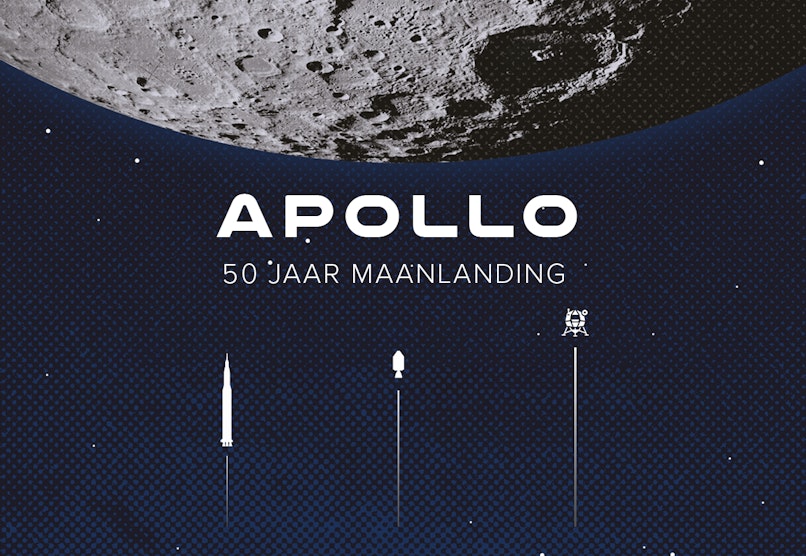
"The Little Star That Could" is a story about an average yellow star searching for planets of his own to warm and protect. On his journey, our little star meets other stars, and learns what makes a star special. He discovers that stars occur in groups and form galaxies. Eventually, our little star finds his planets, and each of them introduces itself. This shows that an ordinary star can also be special...
For school visits, an educational package is also available with this show (which includes a workbook and reflection booklet for the students, and a teacher's booklet for supervision).
James, a curious penguin, sets out from the South Pole on a journey around the world. At the North Pole he meets Vladimir the polar bear. Both wonder why the night lasts so long. To solve this mystery, they build an observatory and the space boat "Polaris". They discover many similarities but also differences with planets such as Earth, Mars and Saturn. Come along on a space journey in search of ice, light and a dark starry sky.
We go exploring again with our old friends: Vladimir, the polar bear, and James, the penguin. They travel in their spacecraft Polaris to study the aurora in more detail. However, when they are hit by a meteorite they crash at the foot of an ancient Mayan temple and meet Lucia, a feisty hummingbird who loves rocks. She tells them about the legend of the 'luminous rocks'. Meteors, or shooting stars - the 'luminous stones' - intrigue them all. In search of answers, they set out for the Moon, along the asteroid belt, and finally end up on a comet's nucleus. In doing so, they learn all sorts of new things and facts about the solar system.
The children's show "Perfect Little Planet" tells the story of a family of space aliens, searching for the ideal vacation destination. Together with their space robot, they traverse the universe and visit different planets and moons.
It soon turns out that finding a suitable planet is not easy. For a pleasant vacation it is sometimes too hot, often too cold and some planets you can't even land on at all. Finally, a blue planet looks promising, but is it safe for our aliens?
Celeste receives a visit from the mysterious Moon and his luminous helpers during a sleepless night. The curious girl already knows an extraordinary amount about the solar system but joins Moon in his search for planets around other stars. These exoplanets are very difficult to find and investigate. Yet together they manage to unravel detection methods and spectacular discoveries follow. Here, the "planet hunting" of astrophysicists is presented in an understandable way and at a child's level. While we're at it, we'll also explore exoplanets full of volcanoes, ice worlds and even super-Earths. Will we find a habitable planet, like Earth, around another star?
In the film screening "To Worlds Beyond" we get to know the sun, planets, moons and numerous other objects from the solar system. During this breathtaking performance, we'll take you along the surface of the sun and the sweltering worlds close to our star. After a passage near our home planet, Earth, we move on to the coldest places in the solar system; icy moons and brilliant comets. We explore planets with huge volcanoes, miles deep canyons, gigantic storms or dizzying rings. A great adventure for all those who want to learn more about our beautiful solar system.
On July 21, 1969, Neil Armstrong became the first human to set foot on the moon. From 1969 to 1972, a total of twelve astronauts would walk around on our nearest neighbor.
After half a century, it is certainly worth looking back at the Apollo program. Relive the most imaginative period in the history of space travel in this fulldome documentary.






